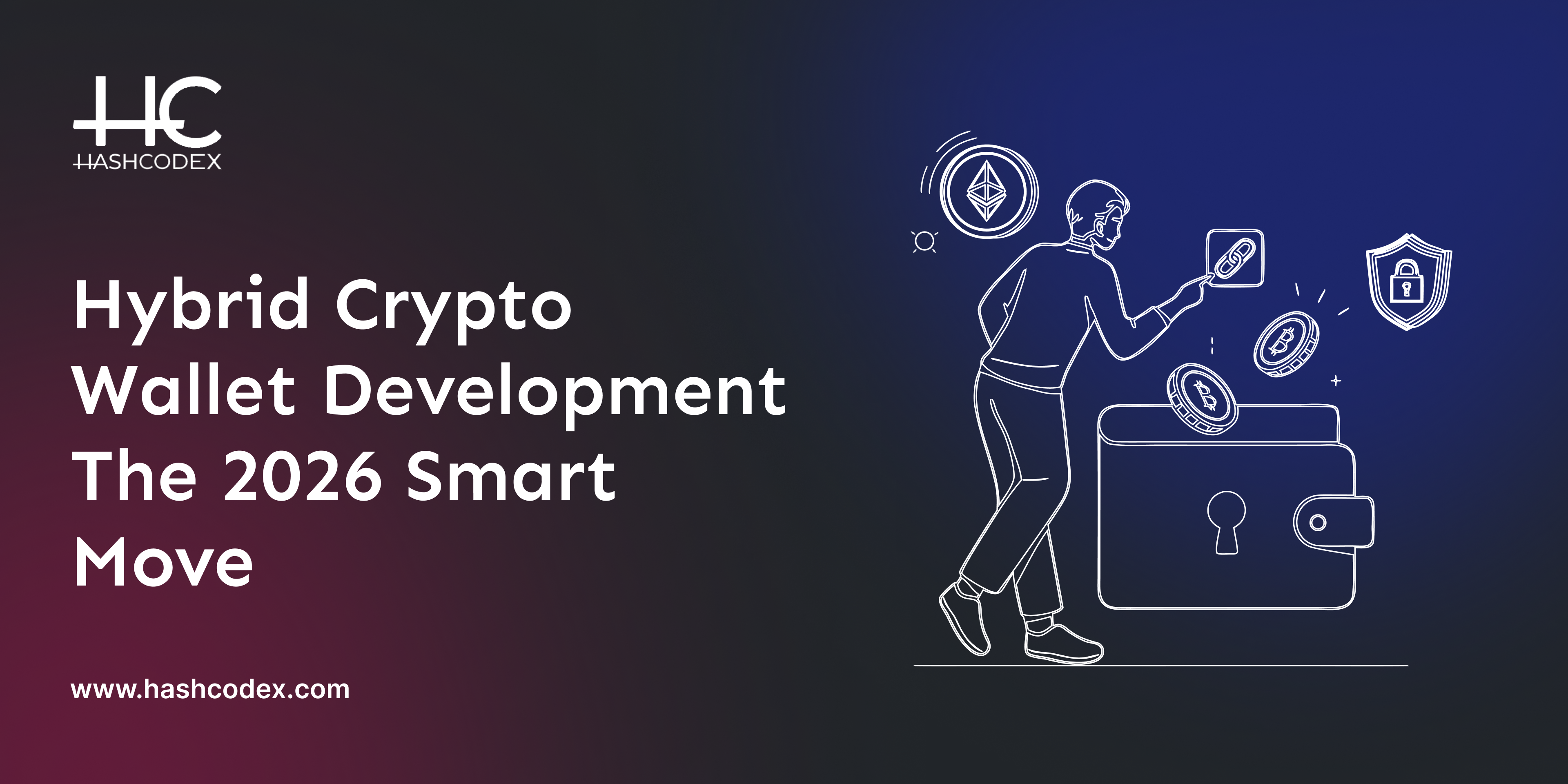What if everything depends on one person holding the keys?
One wrong move, and your users' crypto could be at risk.
That’s why smart teams use multi-signature wallets. Companies like Coinbase, Fireblocks, and Gnosis already do.
Instead of one person making all the moves, multi-sig requires multiple people to approve a transaction. Everyone has to agree first, just like when friends decide where to eat.
Startups use it to manage treasury. DAOs use it to vote on spending. Charities use it to protect donations.
In this guide, you’ll learn exactly how to set up a multi-sig wallet the right way. Step by step. Simple and clear.
Let’s get started.
What is a Multi Signature Wallet?
A multi signature wallet is a type of cryptocurrency wallet that needs approval from two or more people to send funds. It uses multiple private keys instead of just one, which makes it more secure.
For example, a 2 of 3 multi sig wallet means any two out of three people must approve a transaction before the money can move. This setup helps to prevent theft, fraud, or mistakes, because no single person has full control.
Aslo, You can create different setups depending on how many people are involved, such as 2 of 3, 3 of 5, or 5 of 7. The more people required to approve, the stronger the protection.
So, Multi sig wallets are a smart choice for teams, communities, startups, and charities that want to manage funds together in a safe and transparent way.
Who Should Use Multi-Sig Wallets?
Multi-sig wallets are special wallets where more than one person must agree before money can be spent. This keeps money safe when many people share it.
Here are some groups that use multi-sig wallets:
Startups
Startups can keep their money safe by using multi-sig wallets.
For example, if three founders share control, at least two must agree before spending money. This stops one person from using funds alone.
DAOs (Decentralized Autonomous Organizations)
DAOs are groups where members decide together. Multi-sig wallets make sure money is only spent when enough people say yes.
Charities and Nonprofits
Charities use multi-sig wallets so several trusted members must agree before spending. This helps keep donations safe and builds trust.
How to Create Multi-Sig Wallets that Serve Startups, DAOs, and Charities
1. Decide Who Will Control the Wallet
The first step in setting up a multi-sig wallet is choosing the right people to manage it. These people are called signers. They will approve or reject any transaction from the wallet.
Ask these questions to make the right choice:
- Who will need access to the funds?
- Who can be trusted to help make safe decisions?
- How many people should agree before money can be spent?
Common setups:
Startups - often include founders or finance team members. A setup like 2 out of 3 signers is popular.
DAOs- usually select active and trusted community members. A setup like 4 out of 7 works well.
Charities- may include board members, directors, or treasurers. A setup like 3 out of 5 helps ensure safety and trust.
Tip: Use an odd number of signers and set a reasonable approval rule (like 2 of 3 or 3 of 5).
Avoid: Giving access to too many people at first or including inactive members.
2. Choose the Right Blockchain
This is a very important step. The blockchain you pick is where your multi-sig wallet will live. It’s best to choose a chain that is secure, runs smoothly, and supports the wallet apps or tools you want to use.
Good choices for most teams:
- Ethereum: Most supported, very secure
- Polygon: Lower fees, still secure
- Arbitrum or Optimism: Scalable, good for DAOs
- Binance Smart Chain (BSC): Cheaper fees, fast transactions
Pro Tip: If you’re new or working with a small team, choose Ethereum or Polygon. They’re easy to work with and well-documented.
Avoid: Blockchains that don’t support multi-sig wallets well or have very few users.
3. Pick a Trusted Multi-Sig Wallet Tool
You don’t have to build anything yourself. There are tools that let you create a secure multi-sig wallet without coding.
Popular tools to use:
- Safe (formerly Gnosis Safe): Most popular and trusted
- Argent: Simple, mobile-friendly
- Multis: Designed for teams and businesses
Tip: Use Safe for larger teams or DAOs. It works with most blockchains and has good community support.
Avoid: Unknown wallet apps with poor reviews or little documentation.
4. Set Up the Wallet
Now it’s time to create your multi-sig wallet. This is usually done through the tool’s website or app.
What you’ll need to do:
- Add signer wallet addresses (the people who will approve transactions)
- Set the approval rule (like 2 out of 3 people must agree to send money)
- Confirm and deploy the wallet (this writes a smart contract on the blockchain)
Tip: Start small — 3 signers and a 2-out-of-3 approval rule is common.
Avoid: Adding too many signers at first. It can make things slow and confusing.
5. Make Sure Signers Protect Their Keys
Each signer uses their own crypto wallet (like MetaMask or a hardware wallet) to approve transactions. The private key for that wallet must be kept safe.
Best practices:
- Use hardware wallets like Ledger or Trezor
- Never share private keys or seed phrases
- Use a password manager or secure backup
Tip: Train all signers on how to use their wallets and keep them safe.
Avoid: Using just browser wallets with no backup. If someone loses access, they could block transactions.
6. Learn the Transaction Process
Here’s how multi-sig transactions usually work:
- One signer creates a transaction (e.g., "Send 1 ETH to a supplier")
- Other signers are notified
- They approve or reject the transaction
- If enough people approve, the transaction is sent
Tip: Use wallet tools that send notifications or alerts to signers. This helps speed things up.
Avoid: Depending on people to check manually. Some might forget.
7. Add Extra Tools (Optional)
Once the wallet works, you can connect it with other tools to help manage your funds better.
Useful integrations:
- Snapshot (for voting in DAOs)
- Coinshift (to manage treasury and track spending)
- WalletConnect (to access other DeFi apps)
Tip: Start with just the wallet. Add integrations only when your team is ready.
Avoid: Using too many tools too soon adds confusion.
8. Test on a Testnet First
Before putting real money in, test everything on a test network (testnet). This lets you make sure everything works and your team understands how to use it.
Popular testnets:
- Sepolia (Ethereum)
- Mumbai (Polygon)
What to test:
- Creating the wallet
- Adding signers
- Submitting and approving transactions
Tip: Use test ETH or MATIC to run practice transactions.
Avoid: Skipping this step. Mistakes on the mainnet can be expensive.
9. Train Signers and Plan for Emergencies
Make sure every signer knows how to:
- Access the wallet
- Approve transactions
- Recover their account
Also, plan for problems:
- What happens if a signer loses their device?
- What if someone leaves the team?
Smart moves:
- Add 1 or 2 backup signers
- Store emergency instructions securely
- Use an odd number of total signers (to avoid ties)
Avoid: Having only the exact number of signers needed to approve. If one person is unavailable, your funds are stuck.
10. Monitor and Maintain the Wallet
Once your wallet is live, it needs care just like a company bank account.
What to do regularly:
- Review recent activity
- Rotate signers when people leave
- Update approval rules if your team changes
- Keep wallet tools updated
Tip: Set a calendar reminder every week or month to check on the wallet.
Avoid: Leaving it unchecked for too long. Crypto wallets might get risky.
Conclusion
Creating a multi-sig wallet is a smart choice because it adds extra protection to your crypto. Instead of one person having full control, multiple people need to approve before any funds can be moved.
This helps prevent mistakes and makes sure decisions are shared, which is especially useful for teams, DAOs, and charities.
So if you’re looking to build a secure wallet, Hashcodex is here to help. If your users need a safe way to manage crypto, we’ve got you covered. We're experts in crypto wallet development and specialize in building multi-signature wallets that are simple to use and built for security.
Each wallet is designed so no one can move funds alone, which helps keep your users protected. We’ll build it to fit your needs, so your users can manage crypto with confidence.











